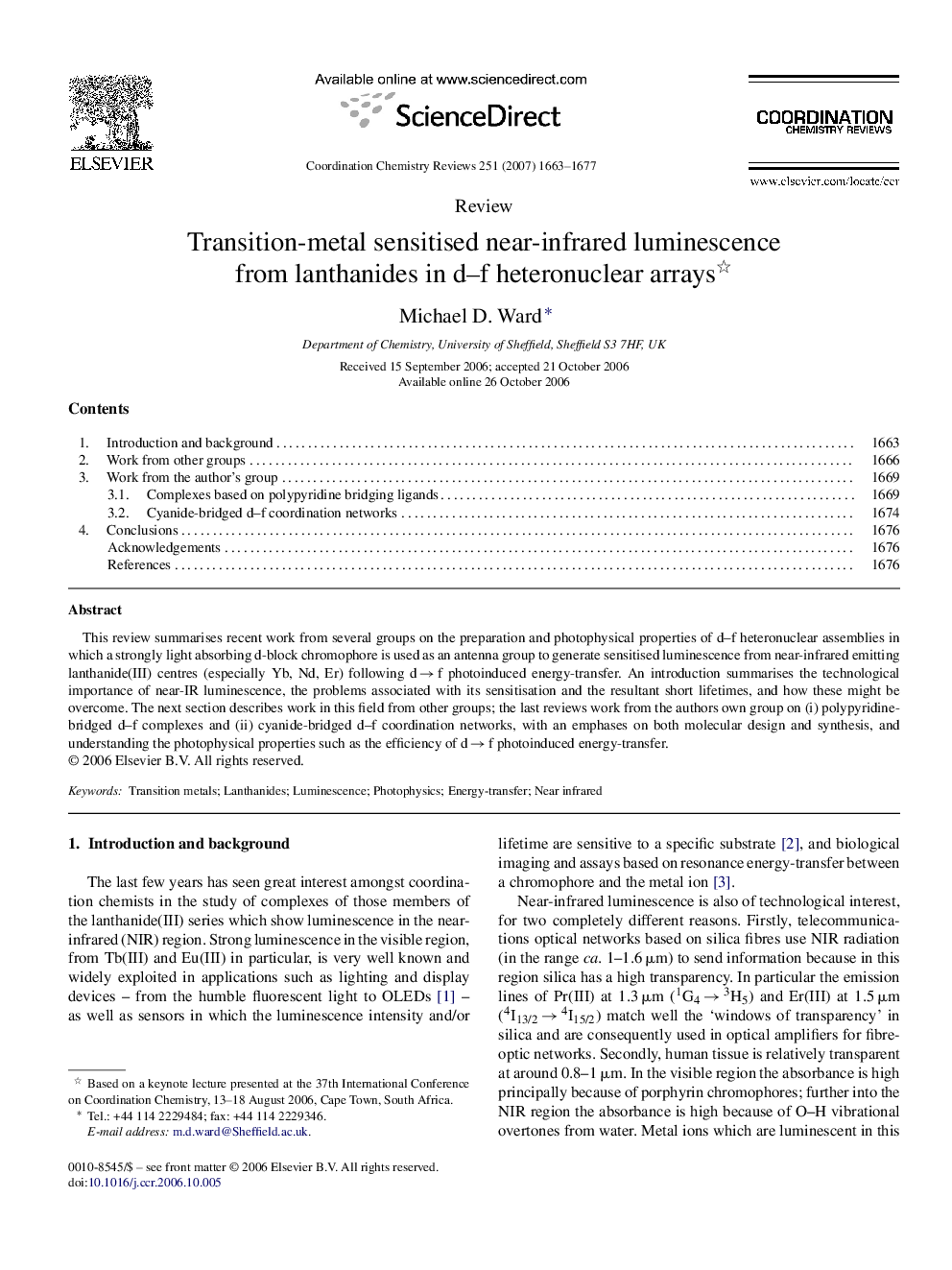| Article ID | Journal | Published Year | Pages | File Type |
|---|---|---|---|---|
| 1299977 | Coordination Chemistry Reviews | 2007 | 15 Pages |
This review summarises recent work from several groups on the preparation and photophysical properties of d–f heteronuclear assemblies in which a strongly light absorbing d-block chromophore is used as an antenna group to generate sensitised luminescence from near-infrared emitting lanthanide(III) centres (especially Yb, Nd, Er) following d → f photoinduced energy-transfer. An introduction summarises the technological importance of near-IR luminescence, the problems associated with its sensitisation and the resultant short lifetimes, and how these might be overcome. The next section describes work in this field from other groups; the last reviews work from the authors own group on (i) polypyridine-bridged d–f complexes and (ii) cyanide-bridged d–f coordination networks, with an emphases on both molecular design and synthesis, and understanding the photophysical properties such as the efficiency of d → f photoinduced energy-transfer.
